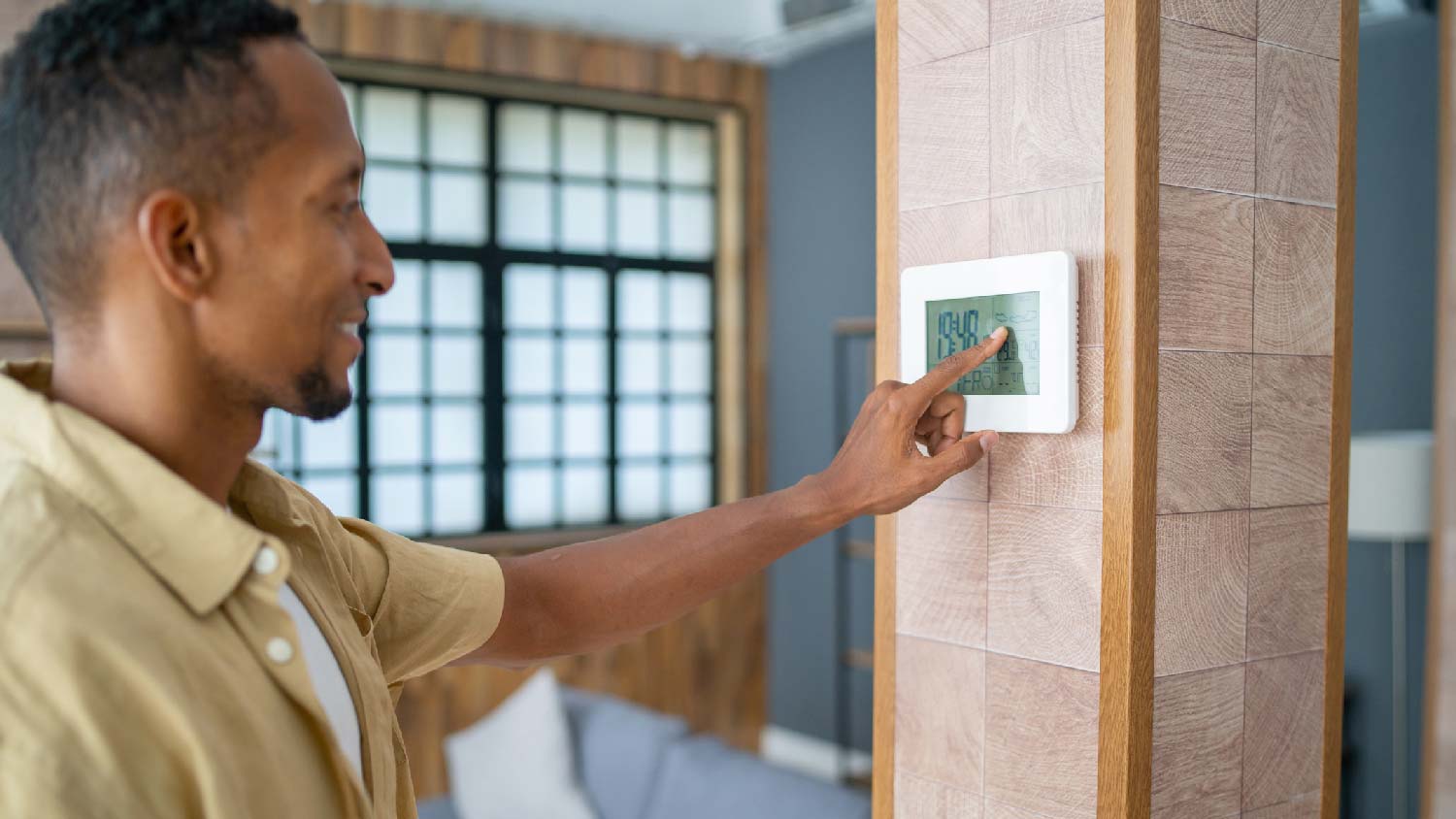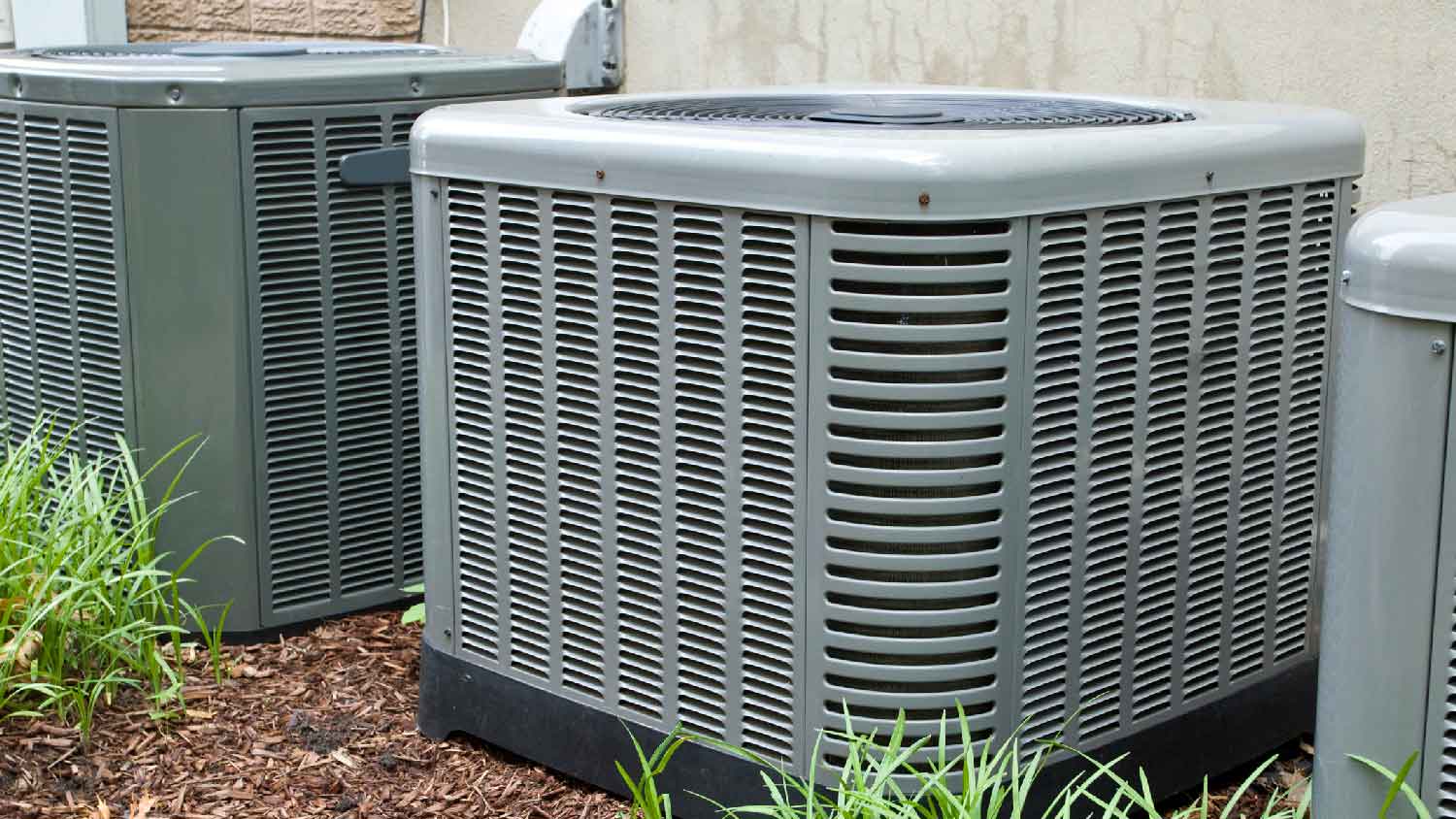Forced-Air vs. Central Air Systems: How Do They Compare?
Stay warm or keep cool—it’s up to you


Forced air often refers to your home’s heating system, while central air conditioning is a system that cools your house.
Both systems use ductwork to distribute warm or cool air through your home.
Your home can have forced air, central air, or both.
You might have heard the terms “forced air” and “central air” used interchangeably, but they aren’t quite the same. To put it simply, forced air relates to your home’s heating system, and central air refers to its cooling system—but there are other differences, too. Below, we’ll break down the basics of forced air versus central air so that you can decide if one or both are right for your home.
Forced Air vs. Central Air: Key Differences
When someone mentions “forced air,” they’re talking about a home’s heating system where a fuel source heats air (for example, in a furnace) and circulates it through ducts. On the other hand, central air refers to the home’s air conditioning system, which uses the same ductwork to distribute cool air around the house.
Something else to note: While the term “forced air” is associated with heating, its true definition is actually a bit broader than that. In reality, a forced-air system is any HVAC system that sends temperature-regulated air—cool or warm—through a system of vents and ducts. In other words, furnaces, heat pumps, and central air conditioners are all types of forced-air systems. With that said, in this guide, we’ll stick to the more commonly accepted meaning to avoid confusion.
What Is a Forced-Air System?

In a forced-air heating system, a furnace or heat pump draws in air, heats it up, and sends the warmed air through ducts to make your home feel nice and toasty. They run on natural gas or electricity, but some types of furnaces run on wood, propane, or oil. If you have a forced-air system, you’ll use a thermostat to turn it on and off and control the temperature.
| Pros | Cons |
|---|---|
| Relatively efficient and affordable | Hard to install without existing ductwork |
| Easy to install if you have ductwork | Needs regular maintenance |
| Heats your home quickly | Heating may be inconsistent |
Best for:
Folks in cold climates who need an efficient heating system
People who already have ductwork and don’t want to break the bank adding heating
Anyone who wants a reliable, easy-to-use heating system
Pros of Forced-Air Systems
Forced-air systems—especially ones with heat pumps—are more efficient than some other types of heating systems (such as baseboard heating). They’re also relatively affordable to install if you already have ductwork in your home.
Once a forced-air system is up and running, it’s easy to operate—as long as you’re comfortable using a thermostat. Plus, after you turn the heating on, it won’t take long to start feeling it warm up your home.
Cons of Forced-Air Systems
Don’t have ductwork? Your local air conditioner installer will have to add it before adding forced-air heating to your home, which can increase your project price by thousands of dollars. If you live in an older home, there might not be space for ductwork at all, which would rule out forced air as a heating option for your home.
On top of that, heat pumps and furnaces require regular maintenance to work effectively. If you have a fuel-burning forced-air system, you’ll need to make sure it’s vented properly so that carbon monoxide doesn’t linger in your home.
Finally, depending on the layout of your home and the condition of your ductwork, you might experience uneven or inconsistent heating with a forced-air system.
What Is Central Air Conditioning?

Central air conditioning is a type of cooling system for your home. There are two kinds of central ACs: split systems, which are more common, and packaged systems. Split systems have an indoor and outdoor unit that work together to pull in hot air from your home, send it to the outdoor unit to cool it, and then redistribute it throughout your house via ductwork.
| Pros | Cons |
|---|---|
| Easy to use | Pricey ductwork installation |
| Quieter than other types of AC | More expensive than other cooling systems |
| Doesn’t take up space in your home | Requires outdoor space |
Best for:
People who want to cool their entire home easily
Folks who already have ductwork and want to upgrade from window or portable ACs
Anyone who wants a hidden cooling system that blends into their home
Pros of Central Air Conditioning
With central air, you can cool your whole house just by pressing a button on your thermostat. It’s much easier than dragging a bulky portable air conditioner around your home to cool individual rooms.
Another perk of central air conditioning? It’s more discreet and takes up less space inside your home than a window or portable AC unit. Plus, once it’s running, central AC is quieter than many other types of air conditioners and forced-air systems.
Cons of Central Air Conditioning
Without existing ductwork, adding central air conditioning to your home is complicated and pricey. On average, installing new ductwork costs $3,500.
As you might expect, cooling your entire home with central air conditioning can result in higher energy bills than using a smaller unit in just one room. To lower these costs, you can use the settings on your AC to automatically turn on and off depending on the temperature in your home.
Additionally, the outdoor unit on a central air conditioning system is bulky and requires space in your yard. If you don’t have much room outside, then central air won’t be the best cooling option for your home.
Forced-Air Systems vs. Central Air Conditioning

Since there’s some overlap between forced air and central air, it can be difficult to compare the two systems. However, let’s look at how they match up in a few key categories.
Appearance: Forced-Air System
Both systems use the same hidden ductwork, which hides in the walls of your home. However, the outdoor units on central AC systems are often bulky and take up a good amount of space outside. Furnaces on forced-air systems are tucked away in a utility closet, basement, or attic. For that reason, forced-air systems are slightly more aesthetically appealing.
Length of Life: Tie

The life span of your HVAC system depends on its components, so it’s a bit of an apples and oranges situation in this category. Heat pumps last 10 to 15 years, while furnaces last 15 to 30 years (however, gas furnaces only last up to 20 years). On the other hand, air conditioning units last between 15 and 20 years. HVAC ductwork lasts 10 to 15 years.
Price: Forced-Air System
Not considering ductwork, a forced-air system is slightly more affordable than central air conditioning, with a new furnace costing around $4,800 to install. On average, the price of installing a new central AC unit is $6,000. (Heat pumps cost more than both of them at $6,100 to install.)
Ease of Maintenance: Central Air
Both systems have similar maintenance requirements, like having a pro come out for annual HVAC servicing and replacing or cleaning your filters. However, forced-air heating systems are more complicated overall since they also require proper ventilation and more in-depth cleaning, especially if you have a wood-burning system. You may even have to hire a pro to install carbon monoxide sensors.
Frequently Asked Questions
While your forced heating system runs, it can pick up dirt, dust, hair, and other particles from inside your house. Changing your furnace filters regularly is key to preventing this debris from getting stuck in your ducts and swirling around your home. With some types of furnaces, there’s also the potential for carbon monoxide leaks. However, staying up-to-date with your HVAC inspections and installing carbon monoxide sensors can help mitigate this risk.
If you have a forced-air heating system, it’s important to have it professionally inspected at least once per year. During one of these visits, your contractor will look at all of the components of your HVAC system, including your furnace or heat pump, air conditioner, and ducts. On average, an HVAC inspection costs $300. It’s also important to perform basic maintenance between inspections, such as changing your filters and cleaning dust from around your vents.





- Furnace Repair
- Air Conditioning Repair
- HVAC Repairs
- Furnace Installation
- Wood & Pellet Stove Repair
- Dehumidifier & Humidifier Repair
- Heat Pump Companies
- Swamp Cooler Repair
- Wood Stove Services
- HVAC Companies
- Commercial A/C Repair
- Geothermal Installation
- Air Conditioning Installation
- Boiler Repair
- 24 Hour Furnace Repair
- Geothermal Repair
- Heat Pump Repair
- Humidifier Installation
- Thermostat Repair
- Thermostat Installation
- Nest Installation
- Heating & Cooling
- Heating Repair
- Furnace Cleaning
- Furnace Tune-Up
- HVAC Technicians
- Subcontractors
- Furnace Maintenance
- Plumbing & Heating Companies
- Wood Stove Inspection
- Mini Split Installation
- Wall Heater Repair
- Duct Installers
- Central Air vs. Window Units: What’s the Difference?
- 9 Types of Air Conditioners: Pros, Cons, and How to Choose
- What Is an Outdoor Forced-Air Wood Furnace and Is It Right for Your Home?
- Condensation on Ductwork: Causes and Potential Solutions
- Mini Split AC vs. Central Air: What’s the Difference?
- How to Tell If the Return Air Is Working With These Simple Tips
- Breathe Easy: 10 Tips for Improving Your Indoor Air Quality
- Does Air Duct Cleaning Help With Smells?
- What Is a Return Air Vent and What Does It Do?
- 9 Ways to Balance Duct Airflow










